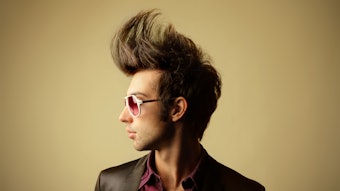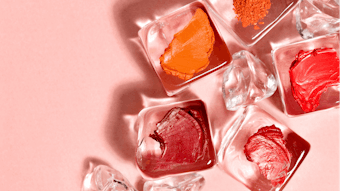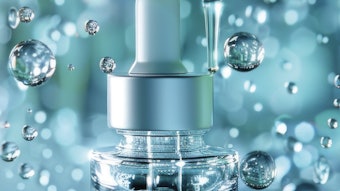
This report comprises first-half 2020 data and offers an update of Global Cosmetic Industry’s Beauty 2020-2030 report, which was crafted at the very start of the COVID-19 pandemic. Special thanks to CEW, which is hosting an ongoing series of virtual events for the beauty industry. -
This year has been like no other in beauty.
The economic and societal impacts of COVID-19 are expected to be massive by year’s end, with beauty experiencing rapid shifts in buying patterns, channel activity and consumer needs.
In this report, we break down the latest sales results and forecasts from leading market data experts, outline trends in each beauty product category and offer insights into shifting retail and consumer realities.
Related: TiO2 Nanoparticle Market to Ramp Up Again Post-COVID-19
The State of Beauty H1 2020
In January-February 2020, the U.S. prestige beauty market was up $78 million year-over-year, per NPD data. By March-April that gain had been erased, producing a year-over-year sector decline of $1.4 billion. That shocking drop has since dialed back slightly to a drop of $850.8 million for the May-June period.
In the second quarter of 2020, NPD reported that U.S. prestige beauty sales totaled $2.8 billion, a -36% decline compared to the same period of 2019. However, online sales spiked 90% in the quarter, representing about 61% of industry sales volume. As of Q2, the online channel comprised 70% of the market share.
During a recent CEW beauty industry briefing, Larissa Jensen, VP, beauty industry advisor, The NPD Group, noted that U.S. prestige beauty has seen its year-over-year dollar performance drop a whopping 25% in the first half of 2020.
U.S. overall value dropped the least, at 25%.
Skin care and hair care fared the best through February and May, while fragrance had its strongest period in June, according to NPD data.
NPD has reported that the COVID-19 shopper is prioritizing skin care and hair care, which suffered smaller declines and relatively rapid rebounds amid regional re-openings. Fragrance and makeup haven’t been so lucky.
Per NPD, during the first half of the year fragrance, makeup and skin care value dropped universally in the United States, United Kingdom, Italy, Spain, France, Germany, Canada and Mexico, with makeup particularly hard hit. U.S. overall value dropped the least, at 25%, while Mexico dropped the most, at 42%.
Previously: How COVID-19 is Impacting 4 Different Beauty Categories
For many of these regions, April was the hardest-hit month in terms of drop in monthly value performance. Germany fared relatively well due to the continuous operation of brick-and-mortar shops. France benefited significantly when stores reopened.
Looking ahead, 55% of surveyed beauty shoppers say they intend to purchase beauty products in the next month, perhaps signaling future momentum.
U.S. sales of prestige makeup totaled $869 million in Q2.
“Many bright spots remain despite the continued struggle in prestige beauty, which has been one of the hardest hit industries in 2020,” says Jensen. “While online sales have been strong, the success of brick and mortar remains a key factor in the industry’s recovery. As we enter the second half of the year, this channel dynamic is one to watch closely. Agility will be important in developing a winning strategy for holiday, which may look very different this year.”
Makeup: All About the Eyes
Prestige makeup had been downtrending prior to the pandemic and took the largest hit amid COVID-19. While e-commerce gains have helped somewhat, online sales growth has been unable to overcome color cosmetics’ sales declines.
U.S. sales of prestige makeup totaled $869 million in Q2, a 52% decline year-over-year. During that period, e-commerce sales jumped 79% year-over-year.
In an interview with Global Cosmetic Industry, NPD’s Jensen noted that, starting in March, makeup was the hardest hit prestige category—declining 3x to 6x more than other segments. Total prestige makeup rebounded by 4% May-June 2020, according to Jensen.
U.S. mass eye color cosmetics sales dipped 8%.
Week-over-week, the makeup sales declines began to soften in the latter half of the second quarter, per NPD.
Eye products have led growth, jumping 6% May-June amid widespread mask usage. Top categories include false eyelashes (up 14%), mascara (up 8%), eyebrow products (up 8%) and eyeliner (up 7%).
Also related: Patent Pick: Omniphobic Pigments for Lasting Wear
Facial makeup jumped 5% for the same period, per NPD, while lips rose 2%. Lips, no surprise, have experienced muted demand amid the same mask usage powering eye products.
Blue light claims boom
Notably, makeup with blue light claims experienced 179% dollar growth January-June 2020, compared to 52% in the same period last year. At the same time, CBD makeup has expanded by more than 100% in the first half of 2020.
Mass color dips modestly
Meanwhile, U.S. mass eye color cosmetics sales dipped 8% for the first half of 2020, aided only modestly by a 19% spike in online sales that couldn’t overcome brick-and-mortar losses, according to Collida.
Mass facial makeup dipped 2.2% for the period, bolstered somewhat by a 30% e-commerce gain.
Mass nail polish sales grew 37.5% year-over-year for the first half of 2020.
As in the prestige sector, mass lip color cosmetic sales dipped 22.2% for the first half of 2020, aided only modestly by an 8% spike in online sales that couldn't overcome brick-and-mortar losses.
Hair Care Resilient
According to NPD data, Q2 U.S. prestige hair care sales totaled $197.2 million, a modest decline of 10%, year-over-year, driven by a 95% year-over-year rise in e-commerce sales. Hair care dollar volumes continued to outperform through June.
Top-performing products in Q2 included hair masks and other hair treatments, which both experienced sales gains of 30% in the period. Hair treatments gained $13 million in sales during the lockdown.
Prestige hair care is the one sector that has not ceded sales back to brick-and-mortar as shops have reopened, according to Jensen. To illustrate, e-commerce results for June were about double that of brick-and-mortar.
Nails & At-home Hair Color
Previously: Editor's Note: Erratic Swings in Color and Care
As spas and salons closed during lockdowns, consumers turned to at-home solutions for hair and nails. Nielsen’s Collida said that at-home nail care has more staying power than hair color, though both are increasing at-home longer term.
At-home nails: the new normal
According to NPD data, the prestige nail sector gained $1 million in sales during the lockdown and grew 29% in Q2.
Mass nail polish sales grew 37.5% year-over-year for the first half of 2020, per Nielsen, led by a more than 140% rise in online sales. During that period, grocery nail care sales jumped 34.3%.
Nielsen data shows that nail care at home remains popular due in part to persistent salon closures, but also new consumer habits. At-home nail care sales growth has hardly slowed amid economies reopening. In fact, 17% of Nielsen survey respondents said they planned to do more home manicures/pedicures.
Hair coloring boom slows
Mass hair coloring sales rose more than 36% year-over-year for the first half of 2020, per Nielsen, driven by a 137% spike in online sales. Grocery channel hair color sales rose 34% for same period.
At-home hair color growth has slowed significantly, according to Collida, dropping from 23% in gains during the peak shutdowns to 6.3% growth in June.
Skin Care Surges
Skin care growth will decelerate through 2024, per Euromonitor. NPD data shows that U.S. prestige skin care sales totaled $1.1 billion in Q2, a year-over-year drop of 18%. During that period, e-commerce sales spiked 93% year-over-year.
Nielsen’s Collida explained that mass facial skin care grew more than 22% year-over-year in the first half of 2020, led by a 42% rise in online sales. Grocery channel facial skin care sales rose 14.5% for the first half of 2020.
Skin care represented 70% of China beauty sales in April.
According to NPD’s Jensen, skin care had the biggest share of prestige beauty sales March-June, overtaking makeup’s recent dominance. Skin care staked up to 50% of all prestige beauty sales at some points in the period. Top product types included body and facial devices (+16%) and body exfoliators (+15%).
Skin care sales week-to-week results can be volatile, said Jensen, and skin care’s comeback has slowed somewhat. That said, skin care dollar volumes continued to outperform through June. Skin care may retain its dominance for some time.
Trending: China, clinical, blue light and more
Relevant: Interesting Twists Amidst the COVID-19 Flux: Editor's Opinion
Notably, skin care represented 70% of China beauty sales in April, said Jensen, illustrating strong demand in a market many Western brands have begun to pursue.
In addition, expert-backed and efficacy- and science-focused brands are clearly preferred, said Jensen. In fact, clinical brands are now the dominant type in U.S. prestige skin care, per NPD, with a market share of 32% for the first half of the year, compared to 29% during the same period 2019.
Mass total beauty online sales for the first half of 2020 rose 27.9% year-over-year.
Body skin care gained $4 million in sales during the lockdown, per NPD. Bath, body and grooming brands overall grew by 13% for the first half of 2020.
Jensen noted that skin care with blue light claims have grown 170% January-June 2020, compared to 104% during the same period last year. At the same time, CBD skin care has grown by 71%.
High-growth Beauty Opportunities
Euromonitor’s Villena noted that the fastest-growing beauty trends for the next five years include health-inspired innovation (ex: immunity, emotional/mental wellness, healthy eating, hygiene), natural/organic offerings (minimalist formulations, herbal ingredients, food-inspired materials, etc.) and digital engagement (AR/VR, livestreaming, shoppable social media).
Villena noted that 54% of online consumers associate beauty with health. And, according to a recent Euromonitor survey, 65% of global consumers consider mental well-being as a key factor in the perception of health.
Echoing Villena’s insights, the report found that demand for immunity and prevention will drive sales growth of immunity-positioned supplements by 14% in 2020.
“Every health and beauty brand should be mindful of mental and emotional health coming to the frontline within the wellness segment,” said Matthew Oster, global head of consumer health at Euromonitor International. “Cultivating the notion of inner calm, balance and emotional support through product and service formats, digital applications, ingredient formulations, as well as community-driven platforms will become a core manifesto for many brands.”
Follow the Cosmetics & Toiletries newsletter for similar reports like this.










